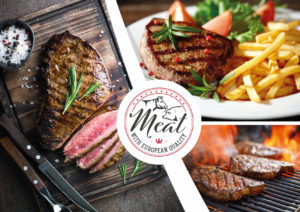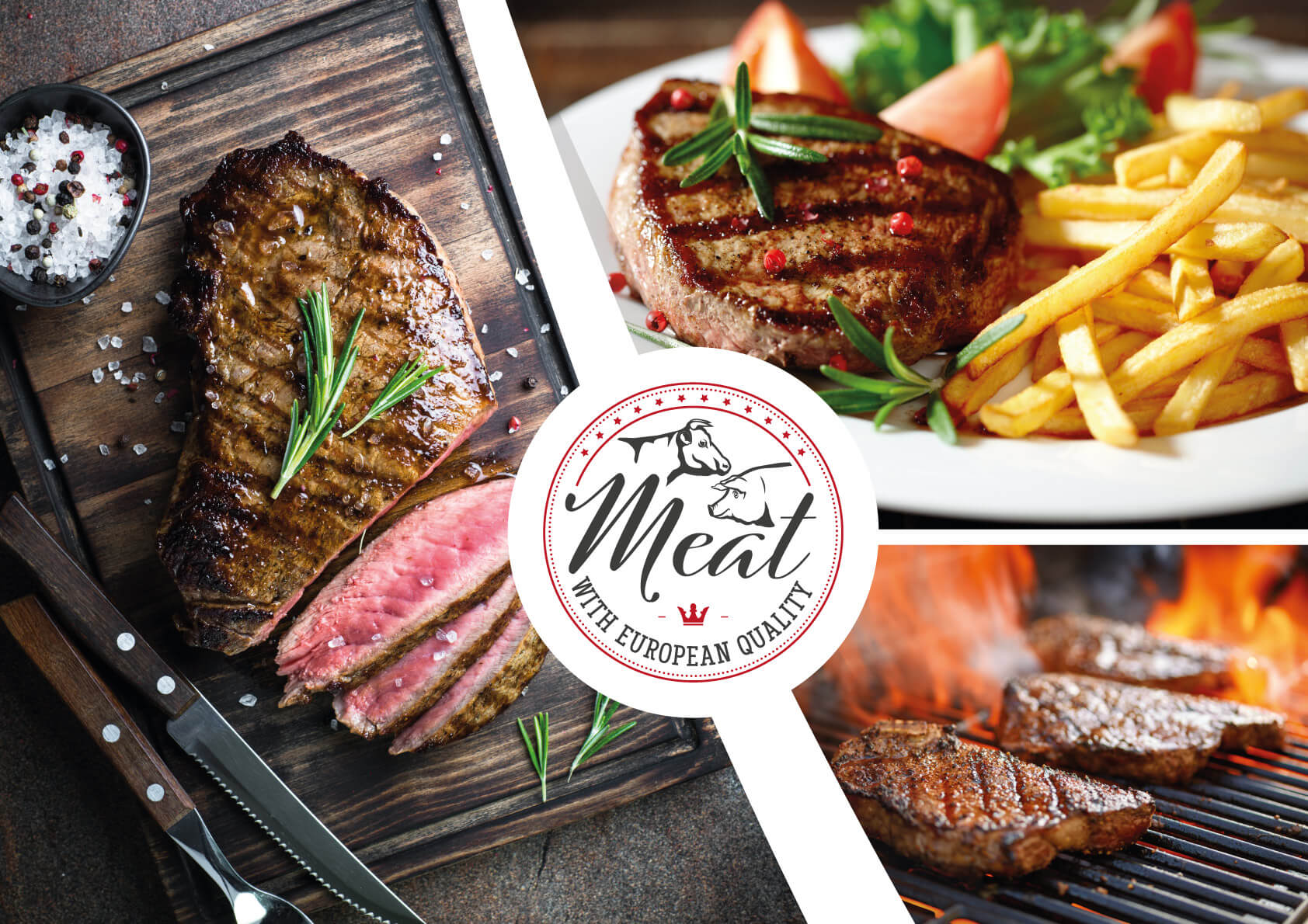Along with the hamburger, steak is one of the most popular and recognisable dishes of American cuisine. According to official figures, up to 92% of Americans eat steak[1], so virtually all meat-consuming Americans are also fans of steak. Anyone who has ever tasted a well-prepared steak is not surprised by this information. Steak can be cooked and seasoned in a variety of ways and complemented with a huge range of sauces and side dishes. Regardless of the preparation method or cooking level, one factor always plays an important role – good quality meat. The perfect steak dish is based on four pillars: good quality meat, proper doneness level, matching side dishes and the right sauce.
First of all, quality. Not all beef makes good steak. From among the classic cattle breeds, meat from breeds such as Black Angus, Red Angus and Hereford is particularly popular. The Angus is a breed originating in Europe, first recognised in systematics in 1839. The first export of this cattle breed to America took place as early as 1878. The breed is characterised by a very high slaughter yield of up to 70%[2]. The Hereford is also a breed that originated in Europe and has a tradition going back over 300 years. These European breeds are distinguished by excellent meat quality resulting from its marbling. The marbling, or intramuscular fat content, of meat can be identified from the appearance and texture[3]. In meat good for steak, you can clearly see the white areas between the pieces of meat. When frying, the fat makes the steak more flavourful and tender. Studies have found that marbling is crucial to meat quality and accounts for about 40% of sensory evaluation. Beef good for steaks can be recognised by the cattle breed and the meat structure characterised by overgrowth of white fat tissue in the muscle. Proper seasoning of beef is also very important. During this process, the meat matures and acquires proper softness and tenderness. Thanks to this, beef can be exported and imported without much loss of quality from the customer’s perspective.
Second of all, proper steak frying level. This is an area where opinions are clearly divided. The degree of doneness depends on the frying temperature, the period and the time the meat was exposed to high temperatures. Blue rare is very bloody meat, prepared at 115-125 °F. The most thoroughly cooked meat is referred to as well-done and prepared at temperature above 160°F. Well-done steak is the most popular among Americans. The second most popular (23% of Americans) is medium-rare, which means that the steak is prepared at 130-140°F. The next most popular doneness levels are medium-well (16%), medium (13%), rare (11%) and blue rare (2%). Both the USDA (United States Department of Agriculture) and many chefs recommend cooking steaks to at least medium.
Third of all, the right side dishes. Above all, steaks go well with side dishes that have a delicate flavour and a crunchy texture. It is most often served with fries, baked potatoes, grilled vegetables or asparagus. Adding distinctive tastes, such as strong Asian spices, can suppress the perception of refined flavour of good beef. Delicate side dishes can also include properly grilled mushrooms, mashed potatoes, new potatoes, broccoli or young vegetables[4].
And finally, the sauce. When it comes to sauces, the opinions are as divided as they are on the meat doneness level. Many gourmets prefer a steak with a minimal amount of sauces and seasonings, in order to maximise the taste of tender quality beef. For enthusiasts of enhanced flavour, you can add the blue cheese sauce based on good quality blue cheeses, also originating from Europe[5]. For fans of milder flavours, there are sauces such as porter, diane, whisky, demi-glace, bearnaise, chimichurri or salsa verde. The sauce, as well as the cooking level, should be tailored to personal taste preferences. Sauces are often based on butter and oil, that is fats with a delicate flavour that enhance the pleasure of tasting meat.
Steak, despite its simplicity, can be very precisely tailored to individual, even very high, taste requirements by adjusting side dishes, sauces and the doneness level. Regardless of personal preferences, one thing remains constant – to make a good steak, you need good beef, such as that produced in Europe from European breeds such as Hereford and Angus.

- [1] https://today.yougov.com/topics/lifestyle/articles-reports/2019/09/23/how-americans-like-steak-and-hamburgers
- [2] https://bydlo.com.pl/rasa-angus/
- [3] https://ageconsearch.umn.edu/record/195324/
- [4] https://www.delish.com/cooking/g4582/side-dishes-for-steak/?slide=20
- [5] https://cooking.lovetoknow.com/steak-toppings
